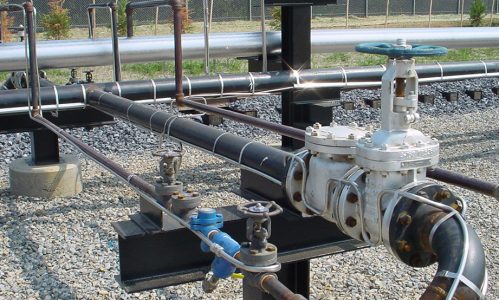Stop the Freeze Before It Starts. When winter hits hard, the last thing anyone wants is a frozen pipe or a broken system. That’s where glycol heat trace comes in — a dependable method to keep operations smooth, even in minus temperatures. Whether you’re managing a plant, a rural site, or a commercial facility, preventing freeze damage is critical. At G & R Insulating and Scaffolding, we’ve been helping clients do exactly that since 2000. This guide will walk you through how glycol heat trace works, why it matters, and how it can protect your investment this winter.
How the System Works: A Simple Circulation for Big Results
Ever wondered how a liquid can keep other liquids warm? That’s exactly what happens in a glycol heat trace system. A heated glycol-water mixture is circulated through insulated tubing laid alongside pipes or tanks. As it moves, it gently transfers heat and keeps those surfaces above freezing. The beauty lies in the simplicity: continuous circulation prevents cold spots and ensures steady protection throughout your system.
This kind of setup is especially useful in larger facilities or remote locations where electric heat tracing becomes less practical. If you’re dealing with extended pipelines or outdoor tanks, this could be your best solution. Interested to know if it fits your site? Keep reading.
Where It’s Most Effective: Not Just for Cold Climates
While it’s valuable in extreme cold, glycol heat trace has wider use cases than you might think. It’s used in oilfields, water treatment plants, agriculture, and even food industries where temperature control is critical. The system works well over long distances and doesn’t require electricity along every foot of the piping, making it cost-effective in remote or hazardous zones.
The versatility of glycol systems makes them perfect for regions with unpredictable weather. If your facility’s output depends on a consistent flow of water or chemicals, this system is a silent guardian. Still curious about whether your project qualifies? You’ll want to check out what makes a good fit.
Is It Right for Your Facility? Key Considerations
You don’t need to be a large-scale plant to benefit from glycol heat trace. If you’ve got infrastructure that risks freezing, this could be a wise choice. The key is system design: understanding flow requirements, choosing the right glycol ratio, and ensuring proper insulation. Even smaller buildings with sensitive equipment can be protected with a well-planned layout.
Of course, no two projects are the same. That’s why working with experienced professionals is critical. The layout, pump capacity, and control setup must all align with your climate and operation size. A consultation can help determine if this system matches your safety and budget needs. Let’s talk maintenance next, because even the best systems need care.
System Care: Low Maintenance, High Reward
Good news glycol heat trace systems are relatively easy to maintain. With regular checks for leaks, glycol fluid levels, and pump function, you can extend the system’s life and performance. The glycol mixture itself should be tested every couple of years and replaced when needed to maintain efficiency.
A seasonal inspection before winter ensures everything runs as expected when the cold hits. Small efforts like these can prevent massive repair bills and costly shutdowns. Whether you have in-house technicians or outsource the work, the maintenance process is straightforward and well worth the peace of mind.
Frequently Asked Questions(FAQs)
- How does glycol heat trace prevent freezing?
It circulates warm glycol fluid through insulated tubing to transfer heat and prevent ice buildup. - Is glycol safe to use in these systems?
Yes, when used and contained properly, glycol is a safe and widely used antifreeze solution. - Can this be used in residential setups?
It’s mainly used in commercial and industrial sites, but some large residential buildings can benefit too. - How energy-efficient is the system?
Very efficient for large or long-distance applications compared to electric heat trace systems. - Does glycol heat trace require 24/7 operation?
It can be automated to run only during freezing conditions using temperature control systems.
Conclusion:
Trusted Protection for Critical Systems. In cold-weather environments, protecting your pipes, tanks, and systems isn’t optional; it’s essential. Glycol heat trace offers an affordable, efficient, and reliable way to prevent freezing damage without relying on electricity at every point. It’s a great fit for remote sites, industrial setups, and any facility that can’t afford downtime.
For over 20 years, G & R Insulating and Scaffolding has helped clients stay protected with advanced insulation and heating solutions. If you’re thinking about installing a glycol system or upgrading your current freeze protection setup, our team is ready to help you choose the right path forward.
